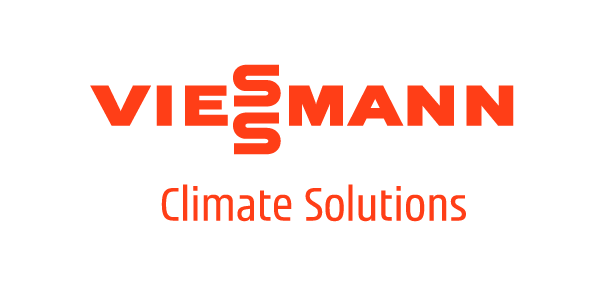Climate protection is a matter of will
The most important lever for a successful energy and heating revolution is the modernization of old heating systems – in other words: the building revolution. There are 21 million heating systems installed in Germany – two-thirds of which are outdated. Modernization to the state of the art could reduce energy consumption in Germany by 13 to 15 percent.

Allendorf (Eder), Dec 16, 2019 – A photo epitomizes climate change: in northwest Greenland, dogs pull their sleds through melted water. Since records began, there has never been so little ice in the Arctic. So it’s high time to act, especially in the building sector.
Start the building revolution now
The most important lever for a successful energy and heating revolution is the modernization of old heating systems – in other words: the building revolution. There are 21 million heating systems installed in Germany – two-thirds of which are outdated. Modernization to the state of the art could reduce energy consumption in Germany by 13 to 15 percent. A modern gas or oil condensing boiler reduces heating costs and saves up to three tons of CO2 – every year. A relatively small investment with a big impact. However, the rate of replacement is stagnating at 3 percent despite the financial assistance programs in place. Combinations of fossil and renewable heat generation – such as solar thermal energy or self-generated electricity from a PV system – further improve the balance. This means that everyone can significantly reduce their carbon footprint already. The essential framework for a newly launched “heating modernization” financial assistance program must be communicated as quickly as possible and applied retrospectively – otherwise there is a risk that investments will be postponed rather than stimulated.
Making buildings fit for the future
We must hand over future-proof buildings to the next generation. These must offer people optimum room comfort and air quality, for well-being at home and at work – 90 percent of our time is spent “indoors”. With decreasing emissions on the path to establishing a stock of climate-neutral buildings by 2050. This increases the value of property – and thus the value of the biggest investment most of us will make in our lives. In this way, we preserve our cultural heritage, make attractive living spaces, and create lasting values.
Accelerating digitalization
Digitalization is transforming buildings into an interactively integrated component of power and heating grids – and thus into part of the central nervous system of a climate-neutral economy. Digital building technologies and artificial intelligence make it possible to precisely adapt room climate and the use of resources to individual needs or to detect and eliminate defects in system technology early on. Sensor technology and assistance systems are already popular: there are three times as many sensors installed in our homes today than there were five years ago. More than 80 percent of users of smart home systems say that they make everyday life easier. A reliable framework for building efficiency, smart grids, and data security should accelerate digitalization.
Using the advantages of carbon-free fuels effectively
To make buildings climate-neutral by 2050, we must replace fossil fuels with renewable ones. This is possible with electricity from wind and solar energy, for example, heat pumps. Another option is the use of gas and liquid fuels based on renewable energies, such as hydrogen from power-to-gas plants, green gas, and e-fuels.
Studies predict competitive prices for synthetically produced hydrogen and methane comparable with the current price of natural gas. Carbon-free fuels help to optimize the energy policy triangle of sustainability/security of supply/competitiveness – and thus strengthen Germany as a business location. The use of a broad technology mix, including renewable gases and oils, would result in significantly lower costs for the energy revolution than in a scenario based on broad electrification of all sectors. The framework for the development and effective use of carbon-free fuels should therefore be developed quickly.
Creating jobs and growth
The heating industry is of crucial importance, not only as a key driver of the energy revolution but also in economic terms: more than 100 companies with around 75000 employees generate some 15 billion euros per year. The building revolution will create new products, supply chains, and business models. Companies are highly innovative and already offer digitally connected heating and indoor climate technology for a variety of energy sources. But large investments are still needed. Decisions on research and development need a reliable political framework for the energy revolution. Then, forward-looking technologies – such as highly efficient heat pumps, stationary batteries, or data-based smart home services – can also create long-term value in Germany. With highly skilled jobs in manufacturing, specialist trades, and suppliers.
A step in the right direction
Policymakers have sent out a positive initial signal with the Climate Protection Package. But this is only the first important step. More need to follow. Citizens must benefit from the opportunities offered by the energy revolution. From buildings that offer a pleasant, healthy indoor climate for living and working – with affordable energy costs. From electricity they generate, store, consume, and feed into the grid themselves. From incentives to intelligently adapt their power and heat consumption to flexible prices. From neighborhood solutions that intelligently connect heating, cooling, and electricity. A citizen-oriented energy revolution ensures approval and mobilizes private capital – only then will it succeed.
Video: Fit for future
According to a recent survey, almost half of all German citizens can see themselves heating with hydrogen. This is because hydrogen burns in a CO2-neutral manner and therefore protects our planet. Viessmann's H2 ready gas condensing boilers can already efficiently convert up to 30 percent hydrogen content in natural gas into heat, thus making them fit for future.












